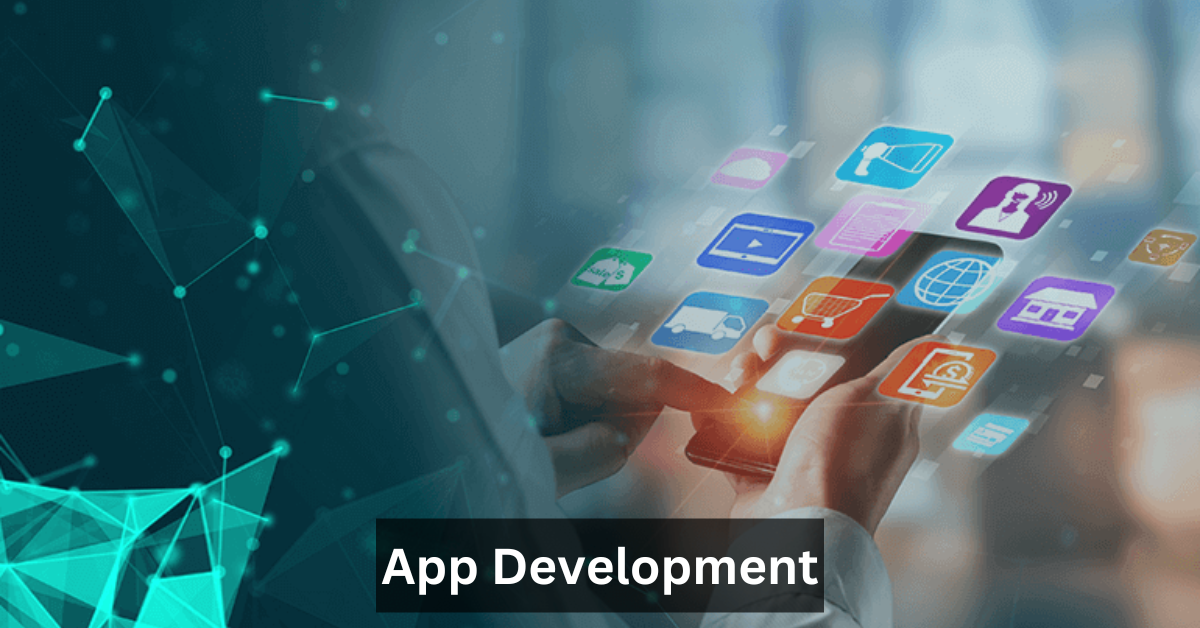In the fast-paced digital era of 2025, App Development has become one of the most impactful pillars of technological innovation. From simple utility tools to complex enterprise-grade systems, mobile and web applications define how users interact with services, brands, and even with one another. Today, it’s nearly impossible to find a thriving business or startup that hasn’t tapped into the power of apps to engage customers, streamline operations, or fuel growth.
App Development has evolved into a strategic journey—turning ideas into reality with sleek code, smart design, and flawless functionality. With millions of apps already circulating in app stores and millions more in development, standing out requires not only technical excellence but also clarity of purpose and deep user understanding.
What is App Development?
App Development is the process of designing, coding, testing, and deploying software applications across platforms such as iOS, Android, web, or desktop. Whether you’re developing a game, a business solution, or a productivity tool, this process transforms concepts into tangible digital experiences. The App Development journey involves multiple steps, from idea validation to ongoing maintenance.
Why does App Development matter now more than ever? Because applications are how modern consumers engage. They’re how businesses scale. And they’re how industries evolve. Whether it’s a social platform, a fintech tool, or an enterprise solution, apps have woven themselves into the very fabric of daily life.
Types of App Development
There are several approaches to App Development, each serving different needs, platforms, and user expectations.
Native App Development involves building apps specifically for one platform—such as iOS using Swift or Objective-C, or Android using Java or Kotlin. This method provides the best performance, security, and access to hardware features.
Hybrid App Development combines web technologies like HTML5, CSS, and JavaScript with native app containers. While not as fast as native apps, they offer quicker deployment and cost-efficiency.
Web App Development allows you to create browser-based applications that mimic native functionality. These are perfect for users who don’t want to install apps or need cross-platform compatibility.
Cross-platform App Development, enabled by tools like Flutter and React Native, uses a single codebase to deploy apps across both Android and iOS. This modern method reduces development time and cost without sacrificing much in terms of performance.
Mobile App Development: iOS vs Android
In the landscape of mobile App Development, the debate between iOS and Android is always relevant. iOS users are typically more willing to spend on apps, making monetization easier. Android, however, dominates global market share and offers unparalleled reach.
Developing for iOS means using Apple-specific tools like Swift and Xcode and deploying via the Apple App Store. Android development relies on Kotlin or Java, with tools like Android Studio and publishing through the Google Play Store.
For many businesses, the solution lies in cross-platform development using tools such as Flutter or React Native. These technologies allow teams to launch apps on both platforms using a single codebase, making App Development more efficient and scalable.
The App Development Life Cycle
- The App Development process is not linear; it’s an iterative journey involving multiple crucial stages.
- The first stage is idea validation. Before writing a single line of code, it’s vital to research market needs, analyze competitors, and define clear objectives.
- Next comes wireframing and prototyping, where tools like Figma or Sketch help in visually planning the app’s layout and functionality. This stage lays the foundation for a seamless user interface (UI) design and intuitive user experience (UX).
- Frontend development deals with the interface users interact with, while backend integration ensures smooth server-side operations using tools like Firebase or AWS. Together, they create the functional core of the application.
- No app is complete without testing and QA. Identifying bugs, testing across devices, and ensuring performance optimization is critical before deployment.
- App deployment is the final pre-launch step, involving submission to stores like the Apple App Store or Google Play Store, while maintaining compliance with guidelines and integrating OWASP Mobile Security standards.
- Post-launch, continuous maintenance and updates keep the app relevant, secure, and user-focused, aided by application performance monitoring (APM) and real-time user feedback.
Top Programming Languages for App Development
- Successful App Development hinges on choosing the right programming language for your project.
- Swift is the language of choice for modern iOS development—fast, clean, and intuitive.
- Kotlin is Google’s preferred Android language, known for its conciseness and safety.
- JavaScript powers frameworks like React Native, enabling cross-platform capabilities.
- Dart, the language behind Flutter, supports dynamic and expressive UI elements.
- Python excels in backend API development, especially for AI-driven apps or data-heavy tasks.
Each language has strengths depending on your project goals, making this an essential decision in your app strategy.
Best Frameworks and Tools for App Development
Technology can either limit or empower your App Development process. Here are the most trusted tools in the industry:
Flutter: Fast-growing Google framework for building natively compiled applications from one codebase.
React Native: Facebook’s widely-used framework, perfect for real-time updates and complex UIs.
Xamarin: Microsoft-backed tool using C# to build robust native apps.
Firebase: A complete backend-as-a-service platform offering authentication, cloud storage, and analytics.
Android Studio/Xcode: Official IDEs for Android and iOS development respectively.
Choosing the right tech stack determines the app’s performance, scalability, and development speed.
Choosing the Right App Development Approach
Your App Development strategy will depend on the scale and complexity of your vision.
Custom App Development is ideal for businesses seeking unique branding and features. It offers scalability, security, and long-term value.
In contrast, template-based apps are quicker and cheaper but lack uniqueness and performance.
Should you build in-house or hire a mobile App Development company? In-house teams offer more control but require long-term investment. Hiring a skilled mobile App Development company brings expertise, access to the latest tools, and faster turnaround times—making it ideal for startups and SMEs.
Costs of App Development
The cost of App Development varies based on features, platform, location, and development model. A simple MVP may cost $10,000–$50,000, while a full-scale enterprise app can exceed $250,000.
Planning for an MVP (Minimum Viable Product) allows you to test market fit while saving money. Don’t forget to account for hidden expenses like server costs, store fees, App Development tools, marketing, and ongoing updates.
Investing wisely in the development phase sets the tone for long-term growth and scalability.
Common Challenges in App Development
- While the journey is rewarding, App Development comes with its share of obstacles.
- Device fragmentation means your app must work across various screen sizes, resolutions, and operating systems—especially on Android.
- Security concerns are ever-present. Implementing robust security protocols, secure API handling, and data encryption is essential.
Other hurdles include performance optimization, user retention, and adjusting the app for scalability and future updates. Agile teams must adapt quickly, track issues using GitHub, and continuously deliver value using CI/CD pipelines.
App Store Optimization (ASO)
To gain visibility in crowded app stores, App Store Optimization (ASO) is a must.
Just like SEO for websites, ASO involves optimizing the app’s title, keywords, description, and metadata. High-quality screenshots, video previews, and positive reviews increase conversion rates.
Crafting a smart launch strategy ensures your app not only goes live but also gains traction. Combine pre-launch buzz with social proof to create a lasting impact.
App Monetization Strategies
- Turning your app into a revenue stream is a key aspect of App Development.
- Freemium model: Offer free features, charge for premium.
- In-app purchases: Especially powerful for games and digital goods.
- Subscriptions: Generate steady income for service-based apps.
- Ads and affiliate marketing: Monetize through third-party networks without charging users.
- The best monetization strategy depends on your app category and user expectations.
Post-Launch App Management
Launching an app is just the beginning of your App Development lifecycle.
Regular updates, bug fixes, and performance improvements keep your users happy. Collect and analyze data using app analytics platforms like Firebase or Heroku to understand user behavior and iterate efficiently.
As you grow, scale your backend using Amazon Web Services (AWS) or Microsoft Azure and prepare for higher loads. This phase is where your app matures into a high-performing product.
The Future of App Development
The future of App Development is bright and incredibly dynamic. New trends are already reshaping how developers and businesses approach the process.
- AI-powered apps are delivering personalized experiences.
- AR/VR technology is creating immersive environments.
- Low-code/no-code platforms like OutSystems are democratizing development.
- Progressive Web Apps (PWAs) are bridging the gap between web and native.
- Staying updated with these trends ensures your app remains relevant and future-proof.
- How to Choose the Right App Development Company
- Selecting the right partner for your App Development journey can make or break your project.
- Ask potential partners about their process, experience, post-launch support, and technology stack. Review their product roadmap, communication style, and track record.
Avoid common mistakes like choosing based solely on price or failing to verify references. A reliable mobile App Development company will guide you through ideation, development, and beyond.
Conclusion
App Development is not just about writing code—it’s about solving problems, creating impact, and building value. From idea to execution, every phase demands careful planning, creative thinking, and continuous improvement.
Whether you’re a startup founder with a bold idea or an enterprise aiming to expand digitally, the time to invest in App Development is now. Choose the right tools, the right people, and the right mindset—and success will follow.
Frequently Asked Questions
How long does App Development take?
Depending on complexity, 2–6 months for MVPs and 6–12 months for full apps.
What is the best programming language for App Development?
Swift for iOS, Kotlin for Android, Flutter and React Native for cross-platform.
How do I reduce the cost of App Development?
Start with an MVP, outsource smartly, and use cross-platform tools.
What is the difference between native and hybrid apps?
Native apps offer better performance; hybrid apps offer faster and cheaper deployment.
Is hiring a mobile App Development company worth it?
Yes—especially for startups looking to save time, gain expertise, and avoid costly mistakes.
Stay in touch to get more updates & alerts on Erome! Thank you



